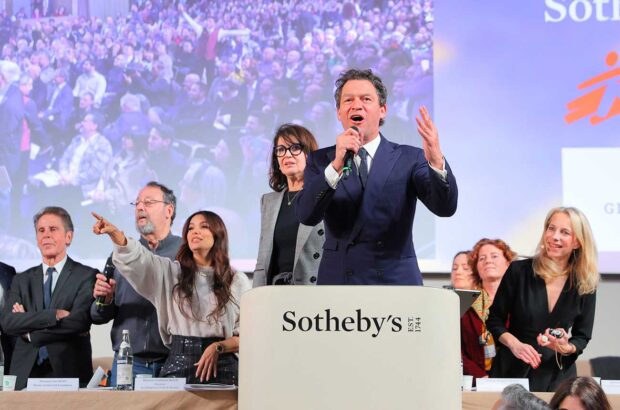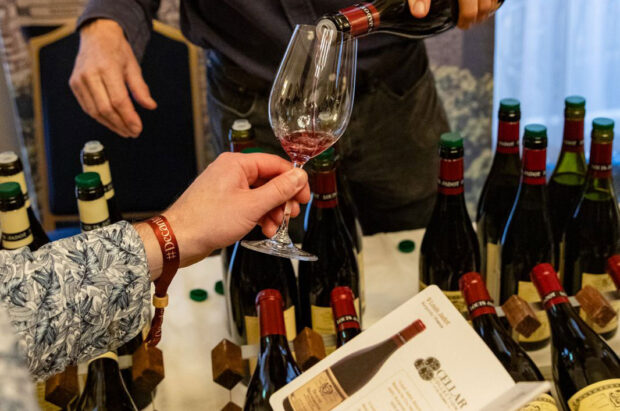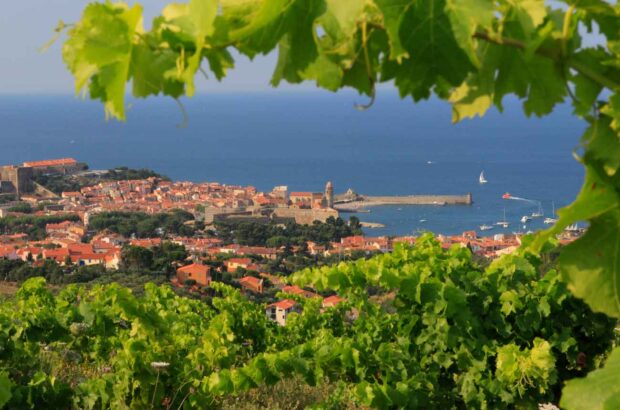Most visitors to Champagne head for Epernay, a quiet town whose main attraction, the Avenue de Champagne, is home to a number of well-known Champagne houses (including a fair few who trade more on the foot traffic than the quality of the wines), the regional museum of Champagne’s wines, and a number of smart places to relax with a glass.
What few realise, however, is that even a one-night trip to Champagne gives plenty of time to explore independently without having to hire a car or arrange a tour. Here then, is our guide to Champagne by train.
Travel Champagne by train – Google My Maps
Travel Champagne by train
This map shows train routes to Champagne from Paris, as well as the route from Reims to Epernay and all the fantastic villages producers, hotels, restaurants and bars to visit along the way
Arrival
Epernay may bill itself as the Champagne capital, but it’s Reims, a smart city in the north of the region, which is the most rewarding place to stay, well worth exploring in its own right (as well as boasting a number of top Champagne houses and the region’s finest dining and drinking options).
Admittedly it’s a little further away from many of the vineyards, but if you want a bit of buzz in the mornings and evenings it’s the best place to base yourself.
Trains run from Paris Gare de l’Est to Reims, taking around 45 minutes.
There are also separate trains to Champagne-Ardenne TGV (high-speed train) station, located on the southwestern edge of Reims city. This connects to the Reims-Epernay train line, although it’s better to head directly to those two cities if they’re your planned first stops. Nevertheless, it’s perfectly convenient for the (sometimes lengthy) gaps in the TGV service to Reims.
There are slower, direct trains to Epernay from Paris Gare de l’Est, too (taking one hour 20 minutes) – these run mostly at commuter times in both directions. They have the bonus of running along the pretty Marne Valley vineyards on the way into Epernay.
All aboard the vineyard express: Reims-Epernay line

With its pretty villages and great train connections, Champagne is an easy region to visit by rail. Credt: ImageDJ / Alamy Stock Photo
Running once an hour in both directions throughout the day, the regional train (called the TER) calls at two notable Champagne villages – Rilly-la-Montagne and Avenay Val d’Or – and perhaps most usefully Champagne’s historic vineyard town, Aÿ, perched on the river Marne just north of Epernay.

STOP 1: Rilly-la-Montagne, just 13 minutes on the train from Reims, is a quiet town on the north-facing side of the Montagne de Reims. This is a well-regarded town and its vineyards are rated premier cru, and are known for producing fruity and bright Pinot Noir, as well as some Meunier.
The top producers here are J Lassalle, Vilmart & Cie and Didier Herbert (soon becoming Herbert & Co, an up-and-coming grower). Be sure to make appointments in advance (see tips below). Le Bacchus and Prise de Mousse are good stops for lunch and a glass.
It is also possible to walk 20 minutes through the vineyards (on the Chemin des Wardes) to pretty Chigny-les-Roses, where Couvert de Vignes is a modern, friendly restaurant with top-notch cooking and a smart Champagne list (and Champagne Palmer & Co’s Domaine du Chalet provides upmarket accommodation). There are a number of Champagne producers here, from independent Gounel-Lassalle to the house of Cattier.
 STOP 2: The next stop, just five minutes on from Rilly-la-Montagne, is Avenay-Val d’Or.
STOP 2: The next stop, just five minutes on from Rilly-la-Montagne, is Avenay-Val d’Or.
There’s perhaps less to see here, although the biodynamic grower Augustin and the bold, oak-influenced Champagnes of Crucifix Père et Fils are both to be found in the village (both accept visits by appointment).
Nearby, too, is the popular Loisium spa hotel in Mutigny, with its heated pool overlooking the vineyards, smart, modern rooms and well-appointed bar (it’s a steep 45-minute walk up to Mutigny).
 STOP 3: The final stop before Epernay is Aÿ, a town known since at least the 14th century for its wines. Aÿ is home to the sister houses Bollinger and Ayala (both of which offer visits bookable online), as well as Deutz and top independent estate Henri Giraud (which also offers accommodation in the luxurious Manoir Giraud).
STOP 3: The final stop before Epernay is Aÿ, a town known since at least the 14th century for its wines. Aÿ is home to the sister houses Bollinger and Ayala (both of which offer visits bookable online), as well as Deutz and top independent estate Henri Giraud (which also offers accommodation in the luxurious Manoir Giraud).
A short walk (best taken along the canal) takes you to Mareuil-sur-Aÿ, where Billecart-Salmon and Philipponnat call home (both accept limited visitors, enquiries can be made via their websites). Top growers in these two villages include Geoffroy and Marc Hébrart, both of which offer visits by appointment.
Aÿ offers up fine, modern dining at Avarum, plus fine, heartier fare at local favourite Rôtisserie Henri IV, where it’s best to make reservations. There is also the Pressoria, an interactive sensory and tasting experience housed in an old Pommery press-house.
 STOP 4: In Epernay itself, visits to Moët et Chandon, Perrier-Jouët, Boizel, Gosset, Alfred Gratien, Leclerc-Briant and A Bergère promise some of the top Champagnes on offer in the town, with Sacré Bistro the pick of the town’s eating options (book in advance).
STOP 4: In Epernay itself, visits to Moët et Chandon, Perrier-Jouët, Boizel, Gosset, Alfred Gratien, Leclerc-Briant and A Bergère promise some of the top Champagnes on offer in the town, with Sacré Bistro the pick of the town’s eating options (book in advance).
Shops and Champagne bars in Epernay are often rather touristy, not always boasting top-quality Champagne lists, so head to those run by good producers such as Gosset, Janisson-Baradon, Perrier-Jouët and Moët et Chandon. Epernay is rather quiet in the evening; if you’re stopping over for the night it’s best to either stay in Reims or pick one of the increasingly refined options in Champagne’s villages.
Intrepid visitors can walk or cycle (bike hire is available in Epernay) into the Côte des Blancs or the pretty Coteaux Sud d’Epernay from the town (see our regional profile for tips on the best wineries to seek out).

The spectacuar crayères at Ruinart. Credit: Ruinart / Gregoire Machavoine
Reims itself is home to plenty of Champagne houses, although many of the top names, such as Krug, Louis Roederer and Charles Heidsieck, are not open to the public. The unmissable visits, however, are to the Gallo-Roman chalk cellars to the south of the city (at Taittinger, Ruinart or Pommery). It’s a 35-minute walk to this part of town from Reims city centre, or the 20-minute Line 03 bus from Reims central station (Gare Centre) to bus stop C – Pommery.
There are other destinations in Champagne accessible by train, such as the beautiful medieval city of Troyes in the southern Côte des Bar region, and the Champagne-producing towns of Château-Thierry and Dormans (which both lie in the Marne Valley on the Paris-Epernay route). If you’d like to arrange visits in the Côte des Bar or the Marne Valley, producers may pick you up or arrange taxis from these stations.

Tom’s Ticket Tips. Credit: cruceru cristian / Alamy Stock Photo
Handy hints for booking visits
Make sure to reserve visits ahead of time, hardly any Champagne producers, large or small, can accommodate walk-in visitors. Bear in mind that small producers work with very small teams and may try to group visitors together. In-demand producers may not have wine to sell directly – often their production is all allocated, so don’t take it personally if they can’t sell you any. Expect to pay a tasting fee to cover the time taken and wines tasted. Welcoming visitors is rarely profitable for small domaines, they do so to share their story and passion. If you come prepared with a little research, you’ll get more from the visit.
If you’re travelling via train between Reims and Epernay, plan for no more than three visits per day (and two if you’d like a leisurely lunch and a walk). Final visits of the day are usually around 5pm. If you get stuck, taxis (including Uber and Bolt) do run in Reims and Epernay, and can be persuaded to reach most of the nearby Champagne villages.
Most producers are on holiday during much of August, and smaller producers will not be able to accept visitors during harvest (usually early to mid-September). Early spring and autumn can be ideal times to visit.







